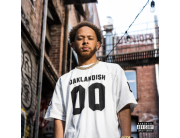Contouring is a makeup technique that uses cosmetics to define, the structure of the face or other body parts.
Contouring is usually produced by placing a warm or cool-toned color that is one or two shades darker than the skin color in areas such as in the hollows of the cheeks, on the side of the nose, and on the temples to give a shadow and a slimming effect. It can be complemented with a highlighter that is one or two shades lighter than the skin color on areas of the face that are more prominent such as on the apples of the cheeks and the tip of the nose or the t-zone (forehead, nose, and chin). This technique can also be referred to as strobing, which generally uses only lighter powders and shades and little to no darker ones.
In the 2000s, the practice of “body contouring” – the application of contouring to other parts of the body than the face, such as shinbones or breasts (“boob contouring”) – became more widely noticed as a result of the increasing number of images of celebrities appearing in social media. In the 2010s, contouring became even more intense as makeup techniques advanced. While contouring has existed for centuries to some extent, the technique was revolutionized by celebrities, such as Kim Kardashian and makeup artists.
The trend of contouring has taken over beauty brands by promoting the sale of items meant specifically for contouring and strobing, its lighter counterpart. Contouring developed from only people in the public eye practicing it, to more affordable and accessible brands manufacturing products so all people can use the technique. The practice is often used by drag queens to emphasize feminine features and soften masculine ones. Products often used include powder contour, which can come in palettes with both light and dark colors for highlighting and contouring, as well as cream contour products that can create a more emphasized look
Highlighter is a type of cosmetic product that reflects light. Often used for contouring, it can be applied to the face or other parts of the body to brighten the skin on a given area and create the perception of depth and angles. The product can come in a variety of forms, including powder, liquid, cream, gloss, solid stick, and jelly. Highlighters became a significant tool among theater and film actors shooting or performing indoors, where natural light was not available to provide a definition of facial features like cheekbones, nose, and jawline. Highlighter also offers the possibility of heightening or diminishing a given feature to suit the character portrayed, as well as aesthetic trends.
MAC Cosmetics’s Strobing Cream is credited as the first highlighter product to be made available to commercial consumers.A long-time tool among makeup artists, highlighter sales saw significant gains among consumers in 2016. Some industry experts have attributed the growth in sales of highlighters and related products to the rise of social media usage.







Add Comment
You must be logged in to post a comment.